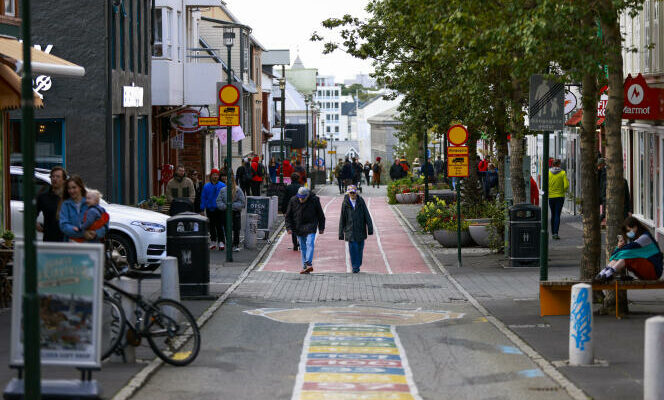It doesn’t seem like much, but for the small island in the North Atlantic, the symbol is strong. This year, and shortly, Iceland should cross the 400,000 inhabitants mark (the equivalent of the agglomeration of Saint-Etienne), according to estimates from the University of Iceland published Tuesday January 2 by the daily Morgunbladid.
In September, a report from the public authority for construction and housing even announced that the threshold of 400,000 could be crossed before the end of 2023. During the last census, on 1er January 2023, the population was 387,758 people.
While many countries of the Old Continent are seeing their populations stagnate or decline, the volcanic island is recording strong demographic growth: since 2008, the increase is 23%. After the Second World War, there were barely more than 125,000 Icelanders. According to historical data from the National Statistical Institute, the population stagnated for a long time around 50,000 to 60,000 inhabitants, before slowly taking off at the beginning. of the 20the century.
Incredible boom in tourism
The sharp increase in recent years is partly due to the economic rebound recorded by the country following the collapse of its banking system in 2008. After a brutal plunge (-7.7% in 2009), the gross domestic product ( GDP) grew by 4.6% in 2013 and even 6.3% in 2016. This is thanks to the incredible growth in tourism. Since 2011, when the eruption of the Eyjaffjallajökull volcano put the island and its wild nature in the international spotlight, the number of visitors has continued to increase: 459,252 in 2010, 969,181 in 2014, almost 2 million in 2017… According to forecasts from Islandsbanki, there should be 2.1 million in 2023, and exceed 2.5 million within two years.
Unsurprisingly, the boom in hotels, restaurants and various excursions has generated a strong call for foreign labor, while the unemployment rate is at its lowest (3.1% in October 2023). According to the latest official data, immigrants represent 18% of the population, ten points more than fifteen years ago. Of the 31,200 people working in tourism in June 2023, almost half were immigrants. 34.2% of them are Poles, the largest group, followed by Lithuanians and Romanians. In addition, 30% of 26-36 year olds are of foreign nationality.
Tensions
Most work in English – Icelandic is a singularly difficult language to learn – and are concentrated around the capital. Due to soaring rents and rentals on Airbnb, many are struggling to find suitable accommodation.
You have 20% of this article left to read. The rest is reserved for subscribers.
